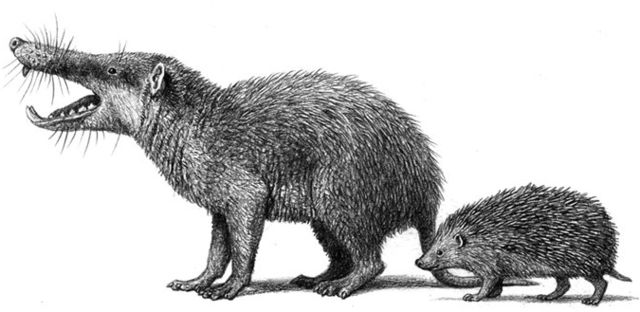Top Qs
Timeline
Chat
Perspective
Deinogalerix
Extinct genus of mammals From Wikipedia, the free encyclopedia
Remove ads
Deinogalerix (from Ancient Greek, "terrible/terror" + Galerix) is an extinct genus of gymnure which lived in Italy in the Late Miocene, 7-10 million years ago. The genus was endemic to what was then the island of Gargano, which is now a peninsula in southeastern Italy bounded by the Adriatic Sea. The first specimens of Deinogalerix were first described in 1972.[5]
The genus is in the hedgehog subfamily of gymnures or moon-rats, which are not rats at all, but rather hairy, superficially rat-like relatives of the hedgehog lacking quills. Deinogalerix had a long, thin, conical face, small pointed ears, a lengthy, tapering tail and long hairs.[6]


D. koenigswaldi's skull was 21 centimetres (8.3 in) long and the entire body measured 60 centimetres (24 in). It occupied the same ecological niche as dogs and cats today. It shared this niche with the enormous barn owl Tyto gigantea.[1]
It is believed that the species of Deinogalerix were insectivores, mostly feeding off invertebrates like beetles, dragonflies and crickets, and possibly even snails. But the larger species may also have scavenged on small mammals, reptiles and birds.[7]
Remove ads
References
External links
Wikiwand - on
Seamless Wikipedia browsing. On steroids.
Remove ads

